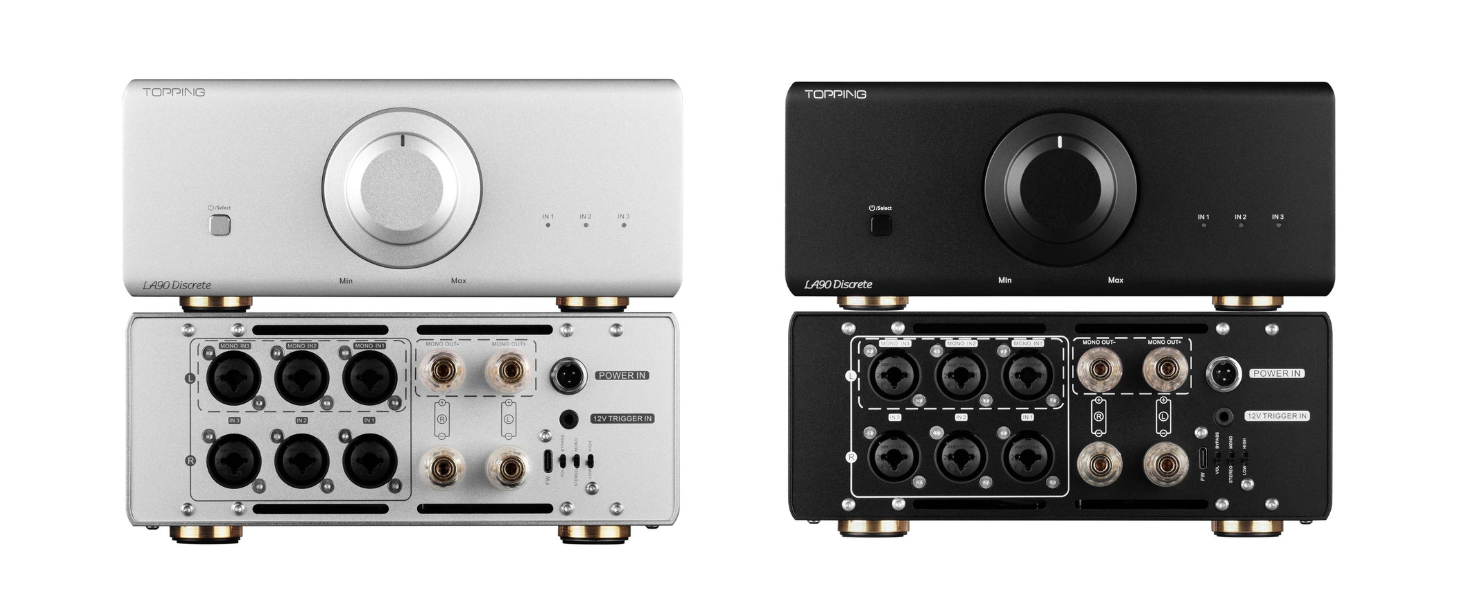
LA90 Discrete vs. LA90: Second Gen Amp Outshines Predecessor
Introduction
In the world of audio amplifiers, TOPPING has been making waves with its high-quality products. Recently, TOPPING discontinued their LA90 power amplifier to make room for the second generation LA90 Discrete NFCA Power Amplifier (LA90D). Both models offer impressive performance, but there are some key differences you should know about. In this comparison, we'll explore their similarities, differences, and use cases to help you understand how the newest model outshines its predecessor.
Discrete Amplifier Circuit: Introducing NFCA
One of the key differences between the two models is the LA90D's NFCA discrete amplifier circuit.NFCA stands for Nested Feedback Composite Amplifier, which is a cutting-edge technology that provides better performance, lower distortion, and improved stability. This unique design contributes to the LA90D's slightly superior SNR and overall audio quality.
Power Output: A Slight Edge for the LA90D
The LA90 offers a respectable 110W x 2 in stereo mode, while the LA90D steps up the game with 120W x 2. This extra power can make a difference for those who want a little more oomph in their audio setup.
SNR: Advantage LA90D
When it comes to signal-to-noise ratio (SNR), the LA90D holds the advantage with an impressive 143dB, compared to the LA90's 140dB. A higher SNR means a cleaner, more detailed sound.
Built for Heat Dissipation: Both Models Shine
Both the LA90 and LA90D feature a CNC-machined all-aluminum housing with passive cooling on both sides, ensuring efficient heat dissipation. This design helps to keep the amplifiers cool and operating optimally, even during extended use.
Balanced Inputs: A Draw
In terms of inputs, both models are equipped with three sets of balanced inputs: XLR and TRS, offering versatility in connecting various audio sources.
Gain Settings: A Closer Look
While both amplifiers have 2-step gain settings, there are some differences in the values. The LA90 offers gain settings of +6.7dB and +19dB, while the LA90D provides +9.4dB and +19.4dB in Stereo mode and +15.4dB and +25.4dB in Mono mode. This distinction may affect the sound output depending on the user's preferences and listening environment.
Mono and Stereo Modes: Flexibility for Both
Both the LA90 and LA90D can operate in mono and stereo modes, giving users flexibility in configuring their audio setups.
Trigger Interface: A Unique Feature for the LA90D
The LA90D comes with a 12V trigger interface, allowing it to be easily integrated into a larger audio system. This feature was not available in the LA90.
Size: No Difference Here
Both amplifiers share the same dimensions, making it easy to compare them in terms of physical appearance and integration into your existing setup.
Voltage and Dynamic Range: A Small Edge for the LA90D
In mono mode, the LA90 outputs 98Vpp@8Ω, while the LA90D offers a slightly higher 106Vpp@8Ω. Furthermore, the maximum dynamic range of the LA90 is 142dB, while the LA90D boasts a slightly higher 143dB. These differences, although subtle, can contribute to the overall sound quality and listening experience.
Conclusion: A Look at the Evolution of the LA90 Series
The comparison between the TOPPING LA90 and LA90D provides a fascinating look at the evolution of these power amplifiers. While the LA90 is discontinued, it's interesting to see how TOPPING built upon its design to create the improved LA90D, which boasts an NFCA discrete amplifier circuit, a higher SNR, and more powerful output.
Understanding the differences between these models helps to highlight the advancements made in the LA90 series. By incorporating additional features such as the 12V trigger interface and refining the gain settings, the LA90D showcases TOPPING's commitment to innovation and continuous improvement in their products.


